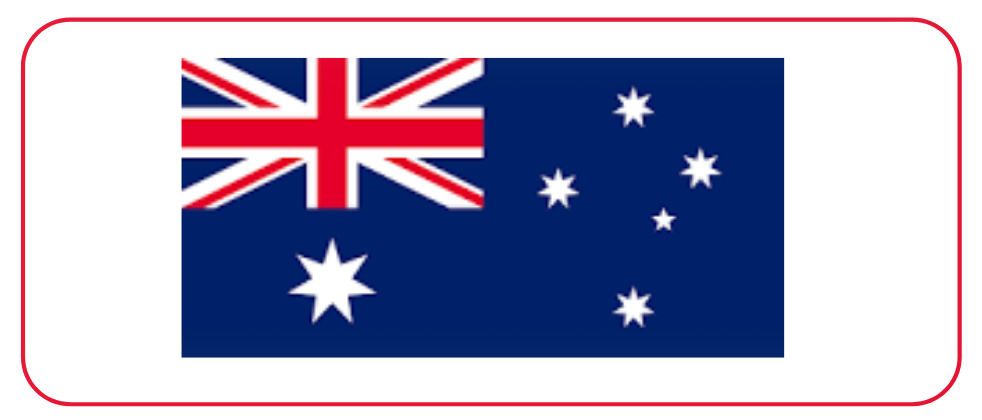MANAGEMENT OF CHENOPODIUM ALBUM L. THROUGH ALLELOPATHY
DOI:
https://doi.org/10.53555/eijas.v4i4.125Keywords:
Mulberry, maize, goosefoot, germination percentage, inhibition percentageAbstract
The aim of the up to date study was to hold out evaluation of the allelopathic activity of leaves and bark of mulberry (Morus alba L.) on germination processes and a few growth parameters of the foremost problematic weeds in maize (Zea mays L.) fields; herb (Chenopodium album L). The investigator hopes that the study can provide data regarding the chances of mistreatment the target species as bioherbicides. In pure culture, the germination percentage (GP) of maize seeds was inefficaciously decreasing with increasing the concentrations of Morus alba leaves (MALAE) and bark (MABAE) aqueous extracts whereas the germination percentage (GP) was considerably attenuated with increasing the concentrations of MALAE and MABAE in mixed culture with wild spinach. Similarly, in pure and mixed culture with Indian corn the doc of wild spinach seeds significantly attenuated with increasing the concentrations of MALAE and MABAE. Accordingly, the inhibition percentage (IP) for the germination processes in Zea seeds in pure culture wasn't vital in response to the apparent allelopathic action of the 2 applied extracts. The proportion was considerably multiplied with increasing the concentrations of MALAE and MABAE in mixed culture with Chenopodium album. Similarly, in pure and mixed culture with Zea mays the (IP) of Chenopodium album seeds significantly multiplied with increasing the concentrations of MALAE and MABAE.
References
. Mohler, C. L. (2001). Weed life histories: Identifying vulnerabilities. pp. 40-98. In: Liebman, M.; Mohler, C. L. and Staver, C. P. (Eds.), Ecological management of agricultural weeds Cambridge, UK.
. Zimdahl, R. L. (1999). Fundamentals of weed science. Second edition. SanDiego CA: Academic Press.pp.556.
. Buhler, D. D. (1999). Expanding the context of weed management. Journal of Crop Production 2: 1- 7
. Singh, H.P.; Batish, D.R. and Kohli, R.K. (2006). Hand book of sustainable weed management. The Haworth Press. New York. pp. 507.
. Gianessi, L. P. and Reigner, N. P. (2007). The value of herbicides in U.S. cropproduction. Weed Technology 21: 559 – 566.
. Khanh, T.D.; Chung, I.M.; Xuan, T.D. and Tawata, S. (2005). The exploitation of allelopathy in sustainable agricultural production. Journal of Agronomy and Crop Science 191: 172–184.
. Heap, I. (2006). International survey of herbicide resistant weeds. Available online at URL: www.weedscience.com.
. Batish, D. R.; Arora, K.; Singh, H. P. and Kohli, R. K. (2007). Potential utilization of dried powder of Tagetes minuta as a natural herbicide for managing rice weed. Crop Protection 26: 566 – 571.
. Sodaeizadeh, H.; Rafieiolhossaini, M. and Van Damme, P. (2010). Herbicidal activity of a medicinal plant, Peganum harmala L., and decomposition dynamics of its phytotoxins in the soil. Industrial Crops and Products 31: 385–394
. an, M.; Pratley, J. and Haig, T. (1998). Allelopathy: from concept to reality. Proceedings of the 9th Australian Agronomy Conference, Charles Sturt University. www.regional.org.au/au/asa.
. Duke, S.O.; Dayan, F.E.; Aliotta, G.; Oliva, A. and Romagni, J.G. (2002). Chemicals from nature for weed management. Weed Science 50: 138-151.
. Narwal, S.S. (1994). Allelopathy in crop production. Scientific Publishers Jodhpur (India). pp.288.
. Fujii, Y.; Parvez, S.S.; Parvez, M.M.; Ohmae, Y. and Iida, O. (2003). Screening of 239 medicinal plant species for allelopathic activity using the sandwich method. Weed Biology and Management 3: 233–241.
. Hong , N. H .; Xuan , T. D.; Tsuzuki , E.; Terao , H.; Matsuo, M . And Khanh, T. D. (2003) . Screening for allelopathic potential of higher plants from Southeast Asia. Crop Protection 22: 829 – 836.
. Igboanugo, A.B.I. (1986). Phytotoxic effects of some Eucalyptus on food crops, particularly on germination and radicle extension. Tropical Science 26:19-24.
. Bansal, G.L. (1992). The science of allelopathy: problems and prospects. In P. Tauro and S.S. Narwal (Eds.). Allelopathy in agroecosystems. Indian Society of allelopathy, Harayana Agriculture University, Hisar, India..
. Basavaraju T.B. and R. Gururaja. (2000). Tree-crop interactions in agroforestry systems: a brief review. Indian Forester 126(11):1155-64
. Cayuela, M.L, Millner P, Slovin J, Roig A. (2007). Duckweed (Lemna gibba) growth inhibition bioassay for evaluating the toxicity of olive mill wastes before and during composting. Chemosphere 68:1985–1991
. Zar, J.H. (1984). Biostatistical analysis. Prentice-Hall: Inc. New Jersey, pp.718
. Uniyal, A.K. and Chhetri, S. (2010). An Assessment of Phytotoxic Potential of Promising Agroforestry Treeson Germination and Growth Pattern of Traditional Field Crops of Sikkim Himalaya, India. American-Eurasian Journal of Agricultural and Environment Sciences 9 (1): 70-78.
. Caboun, V. (1994). Allelopathy research in forest ecosystems of Slovakia. In: Narwal, S.S. – Tauro, P. (eds.): Allelopathy in Agriculture and Forestry. Scientific Publ., Jodhpur.pp.212.
. Nandal, D.P.S.; Bisla, S.S.; Narwal, S.S. and Kaushik, J.C. (1994). Allelopathic interactions in agroforestry systems. In: Narwal, S.S. – Tauro, P. (eds.): Allelopathy in Agriculture and Forestry. Scientific Publ., Jodhpur pp.93-130.
. Elakovich, S.D. and Wooten, J.W. (1995). Allelopathic woody plants I. Abies Alba through Lyonia lucida. Allelopathy Journal 2/2: 117-146
. EL-Bakkosh, A.M. (2010). Allelopathic effect of plant extracts on growth and metabolism of some weeds for potential use as bioherbicides. Ph.D. Thesis, Botany and Microbiology Department, Faculty of Science, Alexandria University, Alexandria, Egypt pp 154.
. Qasem, J.R. (1993). Allelopathic effects of some common weed species in cereal crops. Dirasat 20B: 7–28.
. Kato-Noguchi, H. (2001). Effects of lemon balm, Melissa officinalis extract on germination and seedling growth of six plants. Acta Physiologiae Plantarum 23: 4953.
. Batish, D. R.; Setia, N.; Singh, H. P. and Kohli, R. K. (2004). Phytotoxicity of lemonscented eucalypt oil and its potential use as a bioherbicides. Crop Protection 23: 1209 – 1214.
. Fujii, Y.; Parvez, S.S.; Parvez, M.M.; Ohmae, Y. and Iida, O. (2003). Screening of 239 medicinal plant species for allelopathic activity using the sandwich method. Weed Biology and Management 3: 233–241.
. Ashrafi, Z.Y.; Sadeghi, S.; Mashhadi, H.R. and Hassan, M.A. (2008). Allelopathic effects of sunflower (Helianthus annuus) on germination and growth of wild barley (Hordeum spontaneum). Journal of Agricultural Technology 4: 219-229.
. Al-Zahrani, H.S. and Al-Robai, S. A. (2007). Allelopathic Effect of Calotropis procera leaves extract on seed germination of some plants. Journal of King Abdulaziz University, Science 19: 115-126.
. El-Darier, S.M. and Zein El-Dien, M.H. (2011). Biological activity of Medicago sativa L. (alfalfa) residues on germination efficiency, growth and nutrient uptake of Lycopersicon esculentum L. (tomato) seedlings. Journal of the Faculty of Science, Tiaba University, K.S.A.
. Khattab, K. A. (2011). Molecular Diversity and Chemoecology of Haplophyllum tuberculatum (Forssk.) A. Juss. (Rutaceae) in the Western Mediterranean Coastal Desert of Egypt. M. Sc. of Science, Botany and Microbiology Department, Faculty of Science, Alexandria University, pp 124.
. Alam, S.M. and Islam, E.U. (2002). Effect of aqueous extract of leaf, stem and root of nettle leaf goosefoot and NaCl on germination and seedling growth of rice. Pakistan Journal of Biological Sciences 1(2): 47-52.
. Jabran, K.; Farooq, M.; Hussain, M.; Rehman, H. and Ali, M.A. (2010).Wild oat (Avena fatua L.) and Canary grass (Phalaris minor RITZ.) Management through allelopathy.Journal of Plant Production Research 50(1).
. Mughal, A.H. (2000). Allelopathic effects of leaf extract of Morus Alba L. on germination and seedling growth of some pluses. Range Management and Agroforestry 21(2): 164-169.
. Lee, D.K., (1981). Biomass product as an energy source. Journal of Natural Academy of Science (Republic of Korea). 19, 239–253.
Downloads
Published
Issue
Section
License

This work is licensed under a Creative Commons Attribution-NonCommercial-NoDerivatives 4.0 International License.








 Licensed under CC BY 4.0 International.
Licensed under CC BY 4.0 International.